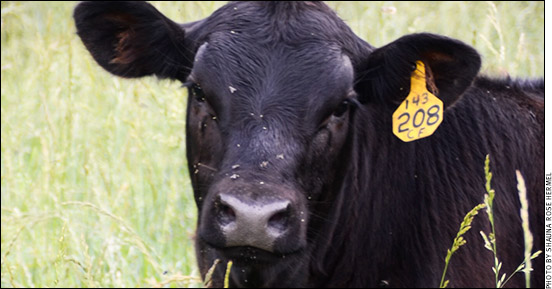
Comprehensive Fly Control
Learning Lounge explains options for total fly control in beef operations.
Pests like flies, ticks and lice can all wreak havoc on a beef operation’s productivity. They can transmit disease, destroy property and disrupt feeding, and thus the growth, of your calves. Larry Hawkins of Bayer Animal Health spoke to cattlemen attending the Learning Lounge session in the NCBA Trade Show as part of the 2015 Cattle Industry Convention in San Antonio, Texas, Feb. 4-7.
There are four defense-point strategies, Hawkins explained, including on the animal, facilities, surrounding environment and feed-through. He suggested rotating pest control because pests develop a reduced susceptibility to the active ingredient over time. There are three “modes of action” to rotate between.
Pyrethroids are sodium channel modulators; they disrupt the normal flow of sodium ions or nerve impulses, he said. Organophosphates are cholinesterase inhibitors, which prevent the breakdown of acetylcholine. Finally, neonicotinoids are acetylcholine receptor agonists, he said. These mimic the action of acetylcholine. Simply put, these agonists keep the nerves of the pest firing all of the time.
The four major pests to beef cattle are the horn fly, face fly, stable fly and house fly. The horn fly reduces weight gain and spreads disease. These are those “black patches” you see on the backs of cattle in the summer, he noted. A single fly bites an animal about 40 times per day and takes a blood meal. Now, if there are 500 flies on the animal, that is a lot of bites and blood taken. He shared research that reported an 11.8-pound (lb.) to 14-lb. disadvantage in cattle without fly control. The horn fly breeds in fresh manure, rests on the cattle and feeds on the cattle blood.
The face fly spreads the bacteria that causes pinkeye, Moraxella bovis. The fly has a spongy mouth much like a Brillo® pad, Hawkins explained. The flies irritate the eye to produce a tear, on which the fly feeds. Cattle with pinkeye sell at a price disadvantage. The face fly breeds in fresh manure; rests on fence posts, trees, bushes and other objects; and feeds on saliva, tears and nasal mucous.
The stable fly decreases weight gain and milk production. One study showed that stable flies restricted weight gain by 0.48 lb. per day, and milk production was decreased by 30%-40%. Stable flies lead to cattle bunching because flies will affect the cattle on the outside of the group most frequently. This bunching can lead to heat stress. The stable fly breeds in manure mixed with moist decaying organic matter; rests on barn walls, fences, weeds and other surfaces; and feeds on blood from cattle.
Finally, the house fly transmits more than 65 disease-causing organisms. They also cause a nuisance to cattlemen and the cattle. The house fly breeds in moist manure and/or decaying organic matter; rests in manure, contaminated soil, fences, buildings and trees; and feeds on old feed, waste, sweat and tears of animals.
He noted how each fly breeds, rests and feeds to help know when and where to treat for them. Animals can be treated with tags, dust, sprays and pour-ons. Facilities can be treated with dust, bait and spray. The environment can be treated with bait, spray and sanitation to reduce breeding grounds. Feed-through can be accomplished by oral medication that mixes into feed and mineral. Additionally, fly predators — such as a wasp who lays eggs in fly pupa — can work effectively in confined spaces, he noted.
For more coverage of the 2015 Cattle Industry Convention & NCBA Trade Show, visit the Newsroom at www.4cattlemen.com.






